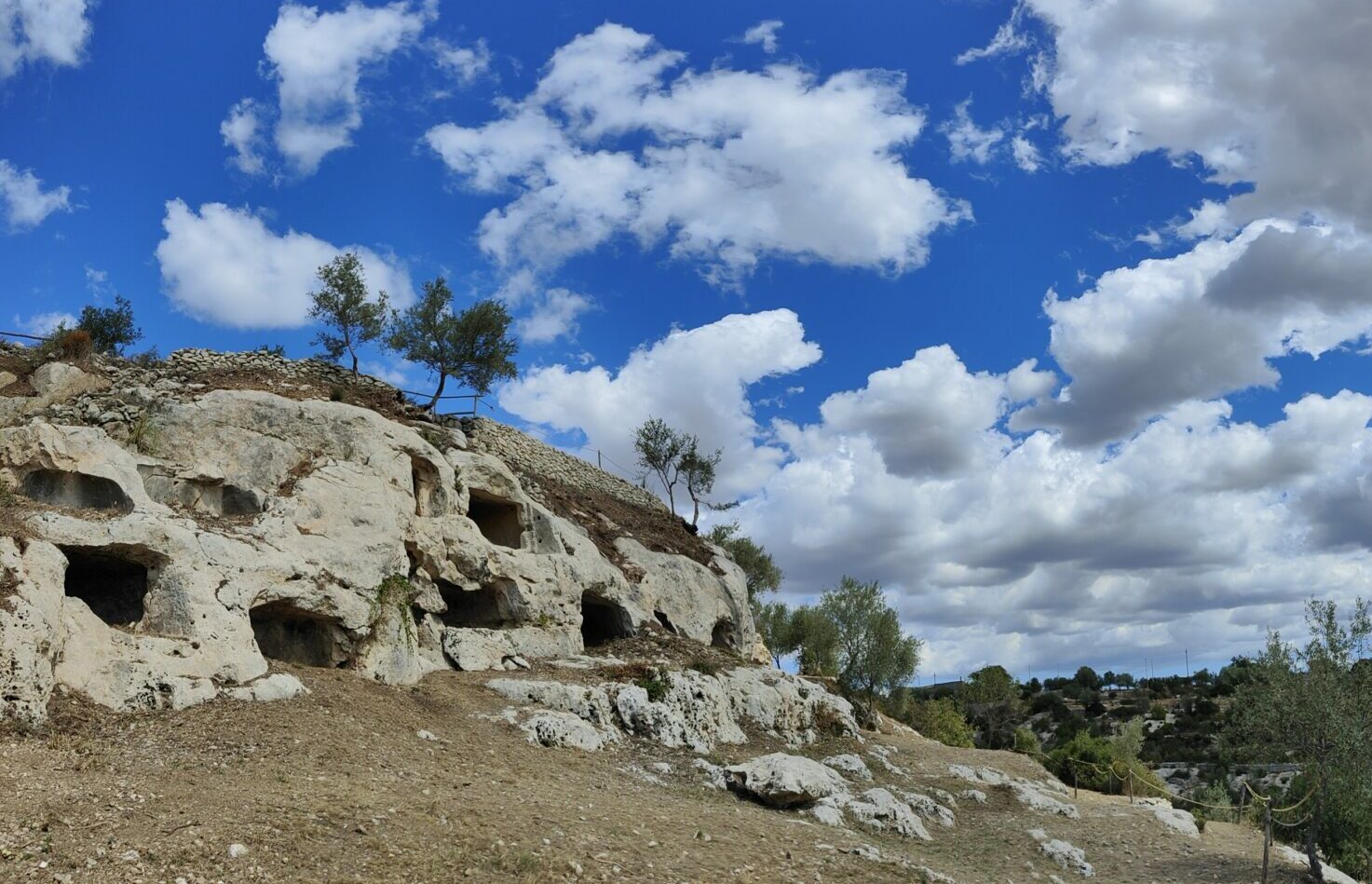This guided tour offers the opportunity to explore the history of the city, from its origins to the present day. From the hypogeic remains of the Sicel Neas to the theatrical Baroque façades of 18th-century Noto.
The tour begins on Mount Alveria, following the traces of Sicel tombs, and moves to the ruins of the medieval city, which was entirely abandoned after the devastating earthquake of 1693.
Exploring the remnants of the medieval city, including massive fortifications, the royal castle ruins, churches, and noble palaces, we also delve into the Jewish history and the Judaica community that inhabited this area for centuries.
Traces of the Jewish past remain in the northern necropolis, where alongside rock-cut tombs from the protohistoric era, trench graves from the Greek period, late ancient hypogea, and a Christian catacomb known as the “Cave of a Hundred Mouths,” there is a small Jewish necropolis dating back to the 5th–6th century AD.
The Jewish Necropolis consists of a cluster of tombs in close proximity, characterized by five menorahs engraved in the local limestone, known as tuff. Two of these menorahs are carved inside a hypogeum called the “Artichoke Cave,” adapted from earlier protohistoric tombs and featuring the traditional arcosolium shape.
Recently, a sixth catacomb with a larger menorah was discovered on the same hill, leading scholars to identify the area as a true Jewish catacomb complex now named the “Hill of Memory.”
From here, the visit continues to Baroque Noto, where you can admire the city’s rebirth, now a UNESCO World Heritage Site. The guided tour follows the main street, starting from the sumptuous Porta Reale, passing the façades of numerous ecclesiastical buildings that tell the story of a decades-long Baroque construction project involving the best architects of the Val di Noto.
The tour proceeds along Via Nicolaci, where visitors can marvel at what are considered the “most beautiful Baroque balconies in Sicily,” already included in the UNESCO World Heritage List since March 1992.

